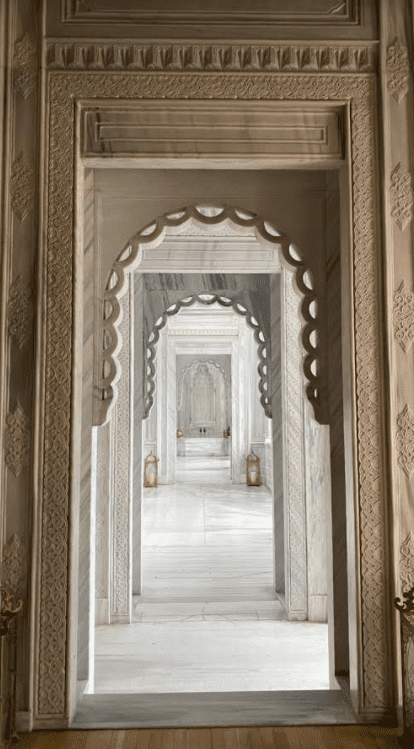Eye on Travel
Eye on Travel — Ciragan Palace Kempinski — March 27, 2021
This week’s broadcast of Eye on Travel comes from the Ciragan Palace hotel in Istanbul, Turkey. Peter has the update on vaccine passports, country closings and new travel restrictions, which cruise ships are actually sailing soon, and life inside a hotel that is also a true Ottoman palace. Joining Peter this week is Ceylan Yeginsu, from The New York Times, with an update on life in Turkey during the pandemic. A report from Antakya, near the Syrian border, on an amazing archaeological discovery. And a close look at how Turkey continues to serve as a melting pot between old traditions and modern thinking. And of course, Peter answers your email questions and takes your calls. There’s all of this and more on this week’s Eye on Travel…from Istanbul, Turkey.
Press the play button on the bar above to stream the full show!
Have a travel question? Then ask Peter. E-mail him at peter@petergreenberg.com, or tweet your questions to @petersgreenberg (include #AskPeter).
Ceylan Yeginsu, London-based Reporter for The New York Times, speaks about getting stuck in Istanbul – where she is now – as COVID-19 started spiking again, and she discusses the nonstop stories coming out of the region. And what’s Turkey like as a ghost town? It’s a great time to visit for a crowdless experience, but what’s a city without its people? She expands on why couples from all over the world are meeting up in Turkey, the rise of medical tourism and the bleak reality of the travel industry’s jobs around the world. She says it’s going to take a while before things return to how they were in 2019. Then, Ceylan and Peter discuss the cruise industry and the vaccine requirements that may come along with its return.
Ralph Radtke, General Manager & Regional Vice President at Ciragan Palace Hotel Kempinski, speaks about the many roles of the Ciragan Palace throughout history as the birthplace of many Sultans and as the Parliament building. He details the restoration process of the palace, which is built around the shell of the old structure as well as how he manages the hotel’s 800 person staff. He also speaks about the importance of hospitality and treating each guest as if it’s their own home, even going so far as to stay open throughout the height of the pandemic as a port in the storm for guests of hotels that could not remain open.
Elizabet Kurumlu, speaks about the long history of the Ciragan Palace Kempinski and its most important features throughout history including its strategic location on the Bosphorus, the untouched forest that once stood behind the Palace, and the winds that came from the Black Sea. The Palace also served as an escape point since the 17th century and was known for its seaside wooden mansions. Then, Elizabet and Peter discuss Turkey’s culinary scene ranging from the traditional Turkish breakfast to simit to sutlac and kunefe. Then, she talks about the long history of hamam, sweat bathing, in the country — which includes warm temperatures, a soap massage, and exfoliation.
Katie Nadworny, American Expat, Fodor’s Essential Turkey Travel Guide Contributor & Istanbul-based Travel Writer, describes life and culture in Istanbul from an American perspective and why the metropolis is now her home. She says that living there has been easy and she wanted to live somewhere where she could learn about the world around here. She expands on the country’s struggling economy at the moment, her favorite Turkish dishes and local coffee shops and why living in Istanbul is constantly fulfilling. Katie talks about how the current financial situation is affecting the local community and what she still finds challenging.
Sabiha Asfuroğlu Abbasoğlu, CEO of the Tourism and Hotel Division at Asfuroğlu Group, speaks about her family’s decade-long journey with the Museum Hotel in Antakya. What started as a project to create the only five star hotel in the region was turned on its head when the ruins of an ancient city were found during the excavation process and everything changed. For the past 10 years, the space has been both a hotel and a museum and home to the world’s oldest single piece of mosaic.









